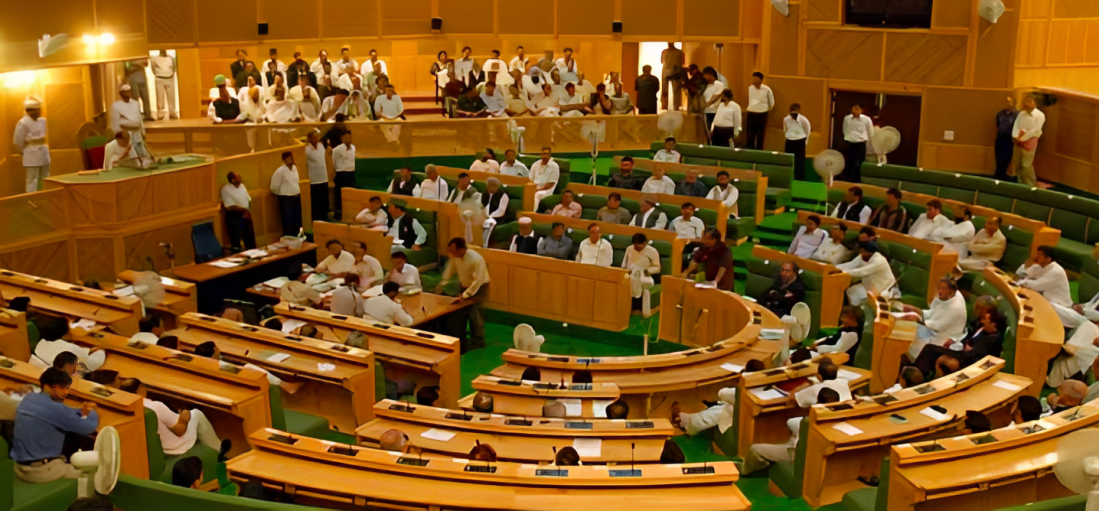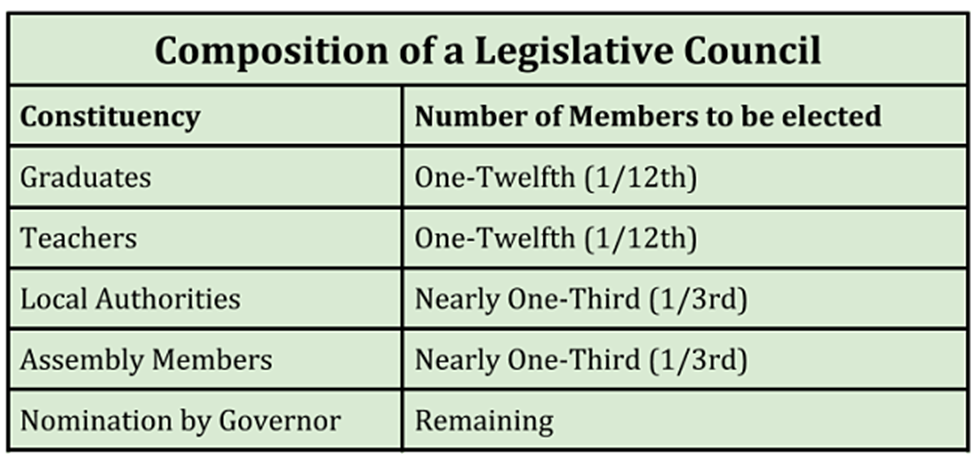Free Courses Sale ends Soon, Get It Now


Free Courses Sale ends Soon, Get It Now



Copyright infringement not intended
Context: The Election Commission of India has decided to hold two separate bye-elections to the Uttar Pradesh Legislative Council.
Details
About
Eligibility and Tenure
Membership

Function
Significance
Challenges
Limited Power
Inadequate representation
Lack of resources
No clear role and Process
Steps need to be taken
Conclusion
Must Read Articles:
Legislative Council: https://www.iasgyan.in/daily-current-affairs/legislative-council
Disqualification of Legislature: https://www.iasgyan.in/daily-current-affairs/disqualification-of-legislators
State Legislative Assembly: https://www.iasgyan.in/daily-current-affairs/state-assembly
|
PRACTICE QUESTION Q. What are the advantages and disadvantages of having a bicameral legislature in a state, and how does the state legislative council ensure effective representation of diverse interests and accountability of the executive? |
https://pib.gov.in/PressReleasePage.aspx?PRID=1921926
© 2024 iasgyan. All right reserved